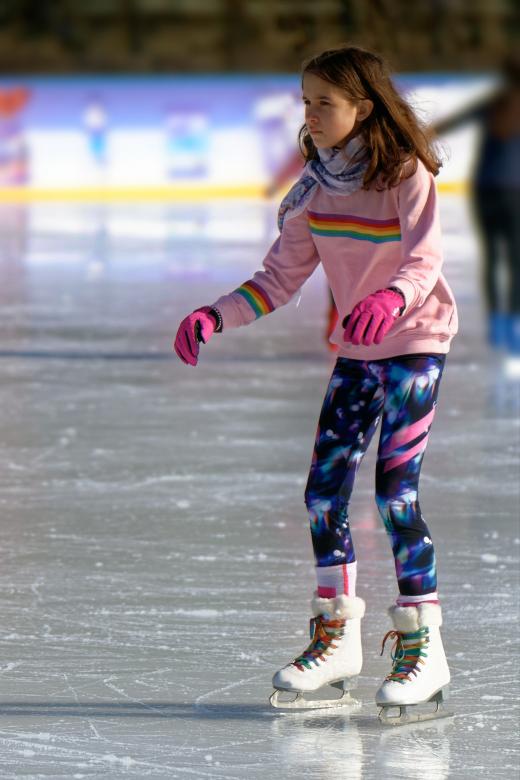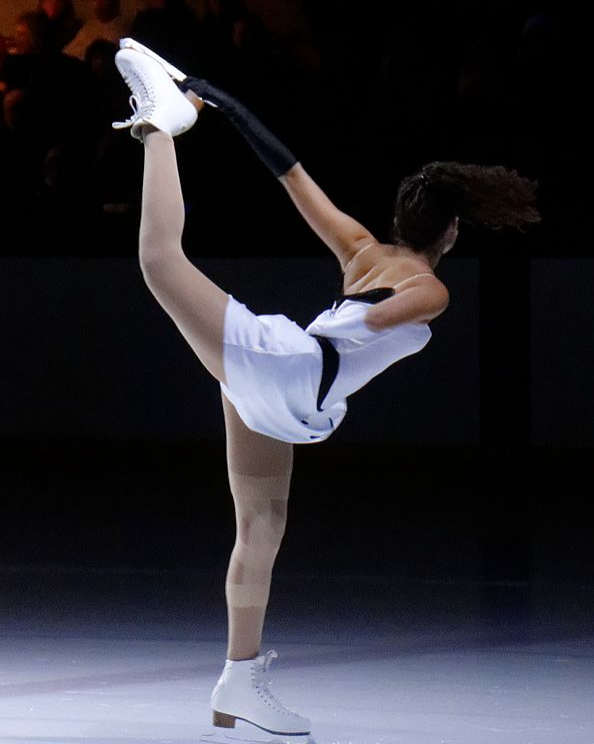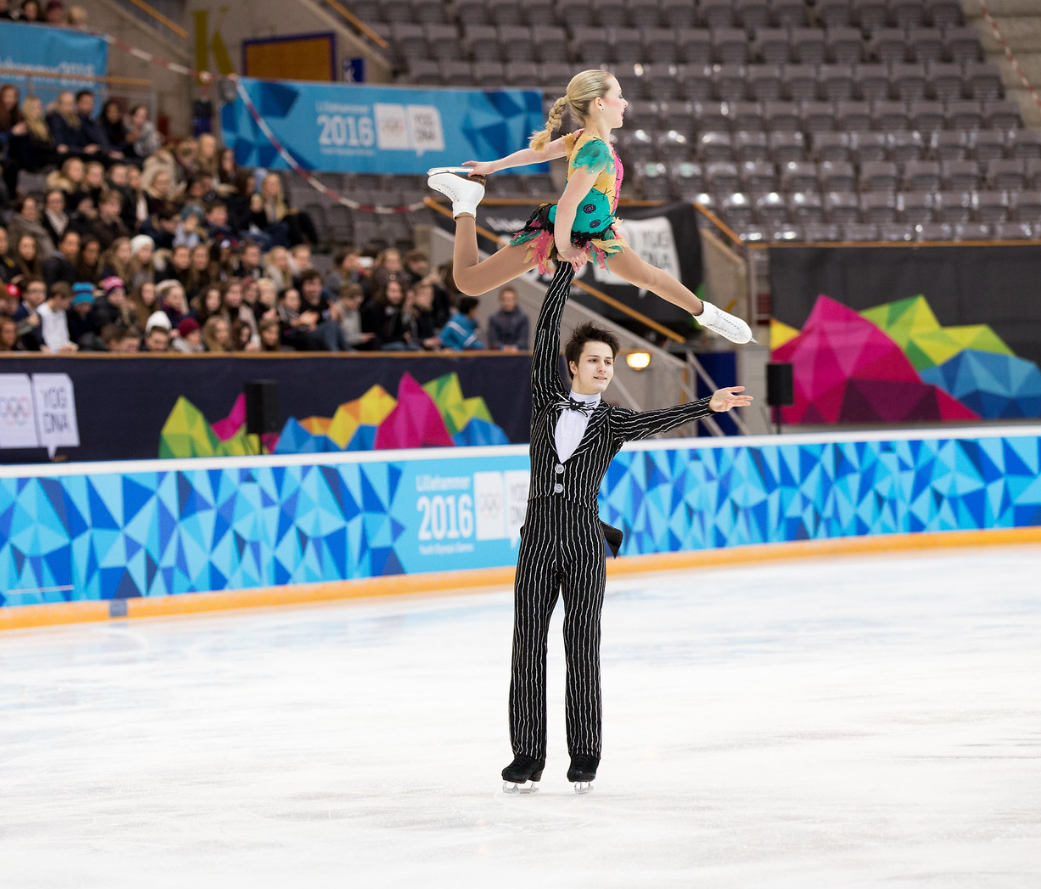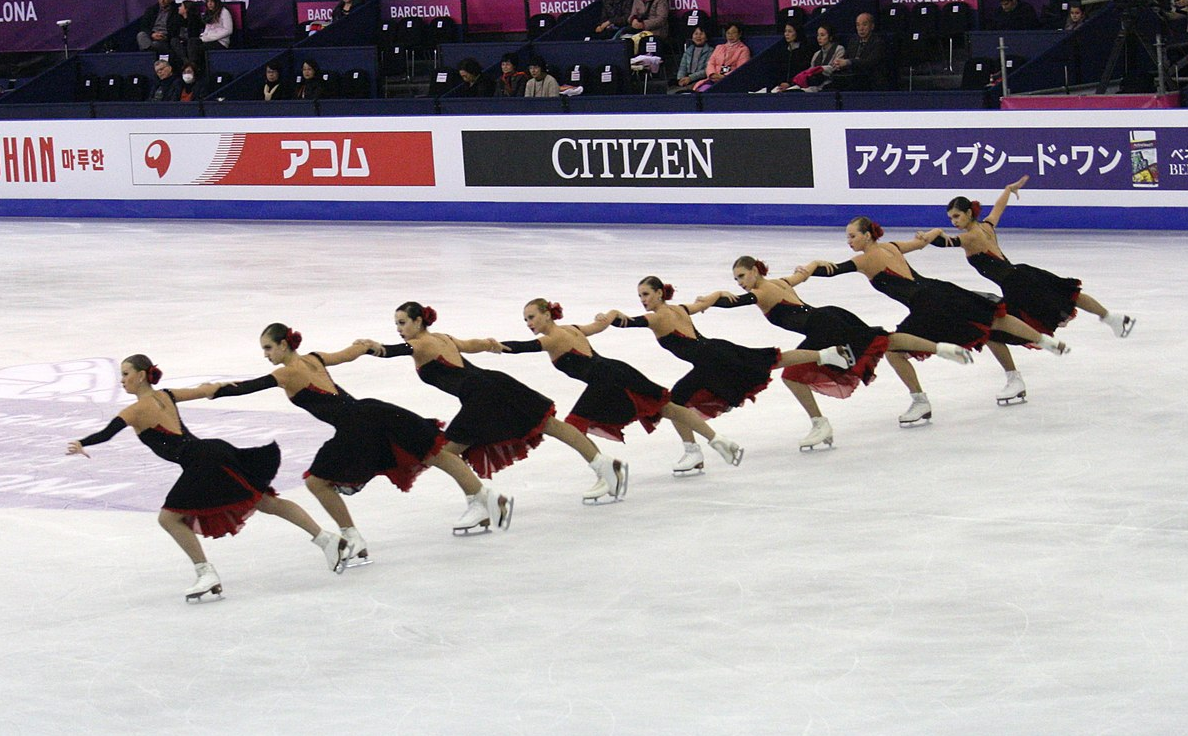Figure Skating is great for both mind and body...
Figure skating is a graceful and competitive winter sport where individuals or pairs perform intricate routines on ice, combining athletic prowess with artistic expression. It involves a series of choreographed movements, spins, jumps, and lifts set to music, judged on technical difficulty, execution, and artistic presentation. Skaters compete in singles (men's and women's), pairs, and ice dance categories, aiming to impress judges with their skill, creativity, and ability to interpret music through their performance. Figure skating is not only a sport but also an art form that captivates audiences with its beauty and athleticism.
For the young skater

Not only does figure skating help young children develop coordination, strength, and agility, it helps to develop their minds. Even at the lowest basic skills levels skaters learn step sequences and can even learn a complete program to be used at local competitions. One of the skills kindergarten teachers look for is that new students can complete a sequence of three tasks. Early skating programs often include upwards of 20 tasks. The young skater will stroke, glide, turn, hop, turn again, swizzle... All of this is done to the rhythm of the music.
Competing
A skater can begin competing soon after starting a learn to skate program. Competing at an early stage helps skaters build confidence. Low level competitions are fun events where medals are plentiful since groups are usually small. We have been to competitions with only 3 skaters in a group so everyone got a medal.
As you move up in skill level the competitions get tougher and the groups get larger, This gradual increase in difficulty and group size prepares the skater for the highest levels of skating. Groups in the middle levels tens to be around 7-10 skaters, depending on the event.
Once a skater reaches the Juvenile level they can begin competing in qualifying competitions such as regional, sectionals and nationals, Beginning with intermediate the skater(s) sill need two programs a short and a long. The juvenile and intermediate levels go from regionals directly to junior nationals. The novice, junior, and senior levels go from regionals to sectionals to nationals. At regional events there may be 50 skaters in a level all competing for the top spots.
Figure Skating Disciplines
Single Freestyle

Single freestyle figure skating is a discipline within the sport of figure skating where an individual skater performs a routine on the ice, showcasing their technical skills and artistic expression. The routine includes a combination of jumps, spins, footwork, and choreographed movements, all set to music. Skaters are judged based on the execution, difficulty, and creativity of their elements, as well as their overall presentation and performance quality. The goal is to deliver a seamless and captivating performance that demonstrates both athletic prowess and artistic grace.
Pairs Figure Skating

Pairs figure skating is a discipline of figure skating where a duo, typically a man and a woman, perform elements such as jumps, spins, lifts, and throws in unison on ice. The performance is choreographed to music, showcasing their synchronization, strength, and artistry. Key elements include side-by-side jumps, where both skaters perform jumps simultaneously, and lifts, where the male partner lifts the female partner above his head. The routines are judged based on technical difficulty, execution, and artistic impression. Pairs skating requires a high level of coordination and trust between partners.
Ice Dance

Ice dance is a discipline of figure skating where couples perform choreographed dances set to music. It emphasizes rhythm, interpretation, and precise footwork. Unlike pairs skating, lifts and throws are not allowed, focusing instead on synchronized movement, intricate footwork, and expressive storytelling through dance. Judges evaluate technical skill, timing, and artistry, making ice dance a captivating blend of athleticism and art.
Synchronized Figure Skating

Synchronized figure skating is a team sport where groups of skaters, usually consisting of 8 to 20 members, perform choreographed routines on ice. These routines are set to music and include elements such as formations, step sequences, and intricate footwork. The objective is to achieve precise synchronization, unison, and flow, with skaters moving seamlessly as a unit. This discipline combines the technical elements of figure skating with the artistic aspects of dance, requiring coordination, teamwork, and creativity. Competitions are held at various levels, including regional, national, and international, with teams judged on their technical execution and artistic presentation.
Adults
USFS has a track that is perfect for adult skaters. There are learn to skate adult programs, and training camps just for adults. There are adult test tracks, and competitions as well. There is even a USFS national adult championship held every year. Adult track figure skating is a competitive discipline within figure skating specifically designed for adults. It allows individuals who may have started skating later in life or who are returning to the sport after a break to participate in competitions. Skaters compete in various levels and age categories, showcasing their skills in jumps, spins, footwork, and choreography. Unlike traditional figure skating, which often starts at a young age, adult track skating provides an opportunity for adults to pursue their passion and compete at their skill level.
Too old to get started as a competitive figure skater?
I see this question asked all the time on figure skating and other forums. When my daughter started skating at the age of 10, a parent at the rink commented that she was starting too late and that "competitive skaters need to start when they are 3-5 years old" Another myth I have heard more than once is that "you need to have all your doubles by age 12." Don't believe any of these urban myths. Don't get me worng starting late means working harder to catch up however here are some examples of very successfull competitive skaters that started later than 5 years old:
Johnny Weir started figure skating when he was 12 years old. He is 3 time US national champion, 2001 World Junior Champion, 2008 World bronze medallist, and placed fifth at the 2006 Olympic Winter Games.
Dick Button began skating seriously when he was 12 years old after his father overheard him being told he would never be a good skater. He was seven time US national champion, five time world figure skating champion, and won two olympic gold medals.
Miki Ando started figure skating at age 9. Ando has won World figure skirting titles, Japanese Championship titles, and is the first and only female skater to complete a quadruple jump successfully in competition.
Peggy Fleming started figure skating when she was 9 years old. She went on to win three wolrd championships, five US figure sjkating championsips, and won the gold at the 1968 winter olympics,
Sasha Cohen started figure skating when she was 7 years old. Cohen is one of the most popular skaters of the past ten years. She won gold at the 2003 ISU grand prix finals, medals at three world figure skating championships, and was one of the first women to land a quadruple jump (in a practice session)
Michael Weiss started figure skating at age 9. Michael is a 3 Time U.S. National Champion, 2 time world bronze medalist, and a member of U.S. Olympic team. He is the first American man to land a quad toe loop in competition and also the first American to land a quad toe loop in a short program. He is also among the first to have earned the U.S and World Junior Champion and U.S. Senior Champion titles.
